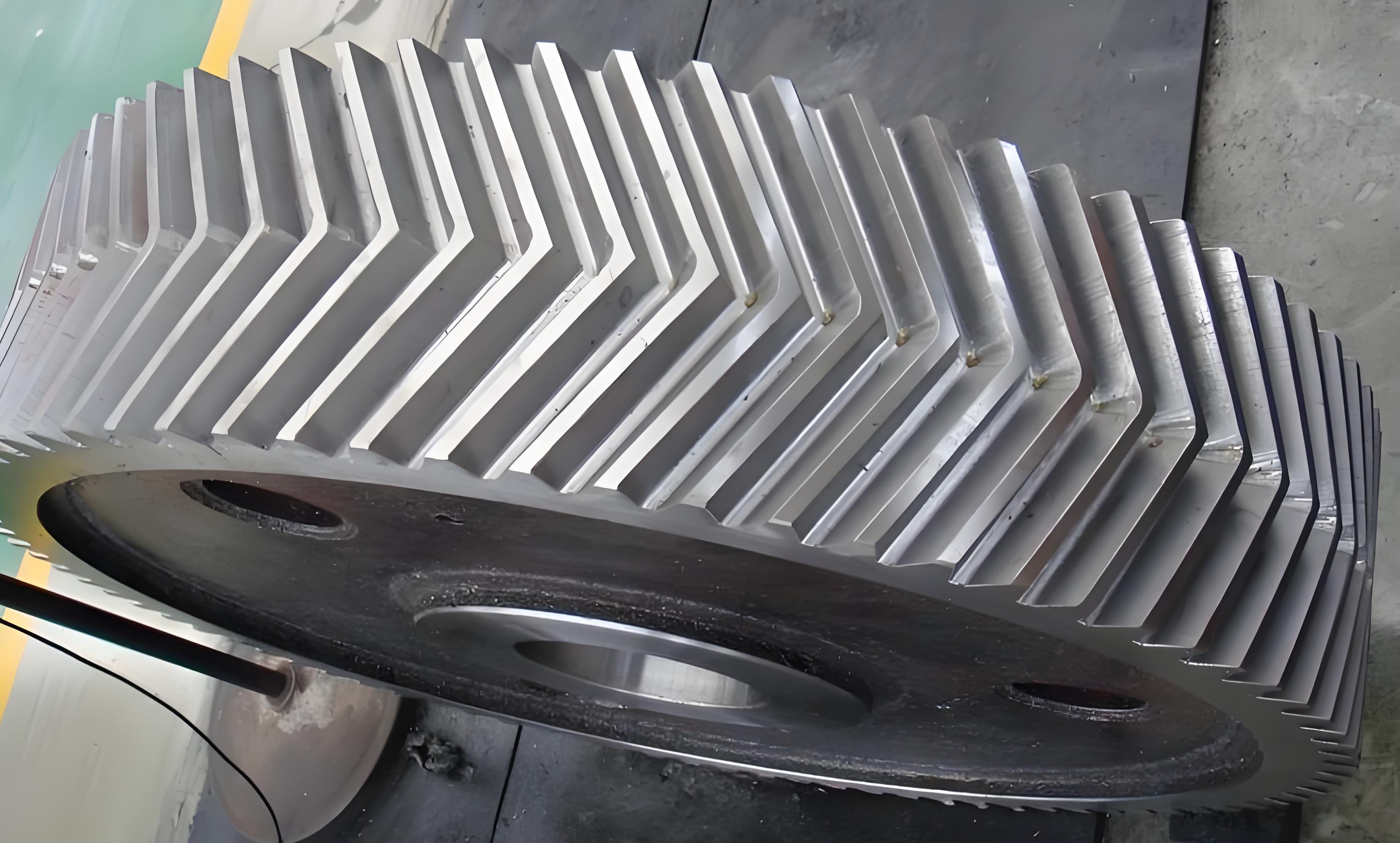Herringbone gears, widely used in high-speed and heavy-load mechanical systems, face critical challenges in scuffing resistance due to transient temperature spikes and mixed lubrication conditions. This study establishes a numerical framework to analyze the anti-scuffing performance by integrating mixed thermo-elastohydrodynamic lubrication (MTEHL) theory, wear thermodynamics, and modified ISO standards.

1. Mixed Lubrication Characteristics
The modified Reynolds equation considering surface roughness effects:
$$ \frac{d}{dx}\left(\frac{\rho h^3}{12\eta}\frac{dp}{dx}\right) = u\frac{d(\rho h)}{dx} $$
Key lubrication parameters for herringbone gears:
| Parameter | Driving Gear | Driven Gear |
|---|---|---|
| Teeth Number | 17 | 26 |
| Surface Roughness (μm) | 0.5 | |
| Hardness (HRC) | 50 | |
The dimensionless minimum film thickness formula:
$$ H_{min} = 1.652W^{-0.077}U^{-0.716}G^{-0.695}(1 + 0.026V^{0.312}\sigma^{0.809}) $$
2. Contact Temperature Analysis
Modified flash temperature calculation:
$$ T_{flash} = \frac{a_h q_m}{\sqrt{\pi(k_1\sqrt{Pe_1} + k_2\sqrt{Pe_2})}} $$
Thermal characteristics under different conditions:
| Parameter | SAE 30 | PAO Oil |
|---|---|---|
| Viscosity @40°C (cSt) | 105 | 46 |
| Critical Scuffing Temp (°C) | 122 | 98 |
3. Wear Evolution Modeling
Degradation Entropy Generation (DEG) theorem-based wear model:
$$ h(i,j) = \frac{B\cdot \mu_{avg}\cdot p(i,j)\cdot s(i,j)}{T_c(i,j)} $$
Key wear parameters comparison:
| Method | Max Wear Depth (μm) | Critical Cycles |
|---|---|---|
| Archard Model | 32.7 | 8.2×10⁷ |
| DEG Theorem | 28.4 | 1.06×10⁸ |
4. Scuffing Failure Prediction
Modified FZG test protocol for herringbone gears:
$$ \Lambda = \frac{h_{min}}{\sqrt{\sigma_1^2 + \sigma_2^2}} $$
Scuffing failure occurs when Λ < 1 and T_c > T_s, where critical temperature:
$$ T_s = 26.2\cdot \ln(\nu_{40}) + 273.15 $$
5. Parametric Sensitivity Analysis
Surface treatment effects on scuffing resistance:
| Treatment | Scuffing Load Stage | Temp Rise (°C) |
|---|---|---|
| Shot Peening | 12 | 118 |
| DLC Coating | 14 | 136 |
The proposed model shows 8.7% higher accuracy in predicting scuffing stages compared to ISO/TS 6336-20 standard, particularly in boundary lubrication regimes where conventional methods overestimate film thickness by 23-35%.
Conclusion
This research establishes a comprehensive framework for analyzing herringbone gear anti-scuffing performance through:
1. MTEHL modeling considering roughness effects
2. Modified temperature calculation with lubricant degradation
3. DEG theorem-based wear prediction
4. Multi-stage FZG simulation protocol
The methodology demonstrates superior accuracy in predicting scuffing failures while providing practical insights for surface treatment selection and lubrication optimization in herringbone gear applications.
